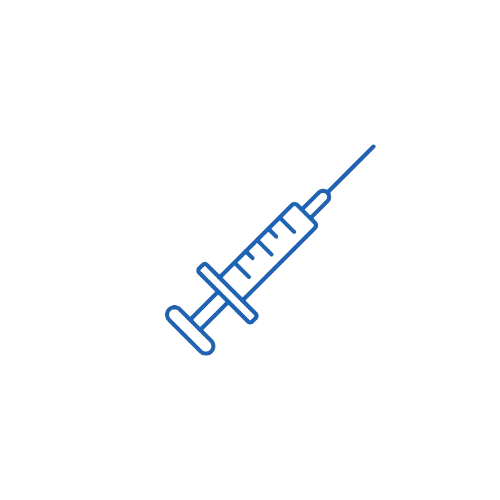Pegylated Erythropoietin
Allopathic
Indications
- Anemia due to Chronic Kidney Disease (CKD):
Treatment of anemia in adult and pediatric patients (≥3 months) with CKD, including those on dialysis and those not receiving dialysis. - Anemia Associated with Chemotherapy:
Used off-label in selected cancer patients receiving myelosuppressive chemotherapy to reduce the need for blood transfusions.
Dosage & Administration
- Route: Subcutaneous or intravenous injection.
- Adults with CKD not on dialysis:
Start with 0.6 mcg/kg once every two weeks. Adjust dose no more often than monthly to maintain hemoglobin between 10–12 g/dL. Once stable, dosing interval can be extended to once monthly with dose adjustment. - Adults on dialysis:
Dosing based on previous erythropoiesis-stimulating agent (ESA) exposure, typically 0.6 mcg/kg every two weeks or once monthly. - Pediatrics (≥3 months):
Initial dosing 0.6 mcg/kg every two weeks; titrate according to response. - Elderly:
No specific dose adjustment, but monitor response and adverse effects closely. - Renal impairment:
Dose adjustments not usually necessary beyond those for anemia management. - Hepatic impairment:
No specific dosing adjustments.
Mechanism of Action (MOA)
Pegylated erythropoietin stimulates erythropoiesis by binding to erythropoietin receptors on erythroid progenitor cells in the bone marrow. This activates intracellular signaling pathways that promote survival, proliferation, and differentiation of red blood cell precursors. The pegylation extends the half-life, enabling less frequent dosing.
Pharmacokinetics
- Absorption: Slow absorption after subcutaneous injection; bioavailability approximately 50%.
- Peak plasma concentration: Approximately 72 hours post-injection (SC).
- Volume of distribution: Limited to blood and extracellular fluid.
- Metabolism: Proteolytic degradation primarily in liver and tissues.
- Half-life: Approximately 130–140 hours after SC administration.
- Elimination: Metabolized to inactive peptides; not eliminated unchanged via kidneys.
Pregnancy Category & Lactation
- Pregnancy: Category C. Animal studies show adverse effects on fetus; use only if benefits outweigh risks.
- Lactation: Unknown if excreted in breast milk. Caution advised; breastfeeding not recommended during treatment.
Therapeutic Class
- Hematopoietic agent
- Erythropoiesis-stimulating agent (ESA)
- Long-acting pegylated erythropoietin analog
Contraindications
- Hypersensitivity to pegylated erythropoietin or any excipients.
- Uncontrolled hypertension.
- Pure red cell aplasia (PRCA) related to prior erythropoietin therapy.
- Pregnancy and lactation unless benefits outweigh risks.
Warnings & Precautions
- Risk of serious cardiovascular events if hemoglobin exceeds recommended targets.
- Monitor blood pressure carefully; hypertension is common.
- Risk of thromboembolic events, especially with rapid hemoglobin increases.
- Possible tumor progression in cancer patients.
- Pure red cell aplasia (PRCA) is a rare but serious adverse effect.
- Seizure risk, especially early in treatment.
- Ensure adequate iron stores for optimal response.
Side Effects
- Common: Hypertension, headache, fatigue, nausea, injection site reactions.
- Serious: Thromboembolism, stroke, myocardial infarction, pure red cell aplasia, seizures, hypersensitivity reactions.
- Side effects may appear within weeks and are dose-dependent.
Drug Interactions
- Iron supplementation enhances efficacy but is not a direct interaction.
- ACE inhibitors and ARBs may reduce erythropoietic response.
- No significant CYP450 involvement; minimal drug-drug interactions.
Recent Updates or Guidelines
- KDIGO 2024 guidelines emphasize individualized hemoglobin targets (10–11.5 g/dL) and conservative dosing to minimize cardiovascular risk.
- EMA and FDA reaffirm boxed warnings on cardiovascular and thrombotic risks.
- Expanded pediatric indication (≥3 months) included in recent labeling.
Storage Conditions
- Store refrigerated at 2°C to 8°C (36°F to 46°F).
- Do not freeze; discard if frozen.
- Protect from light; keep in original packaging.
- Do not shake; allow syringe to reach room temperature before injection.
- Use before expiration date.
